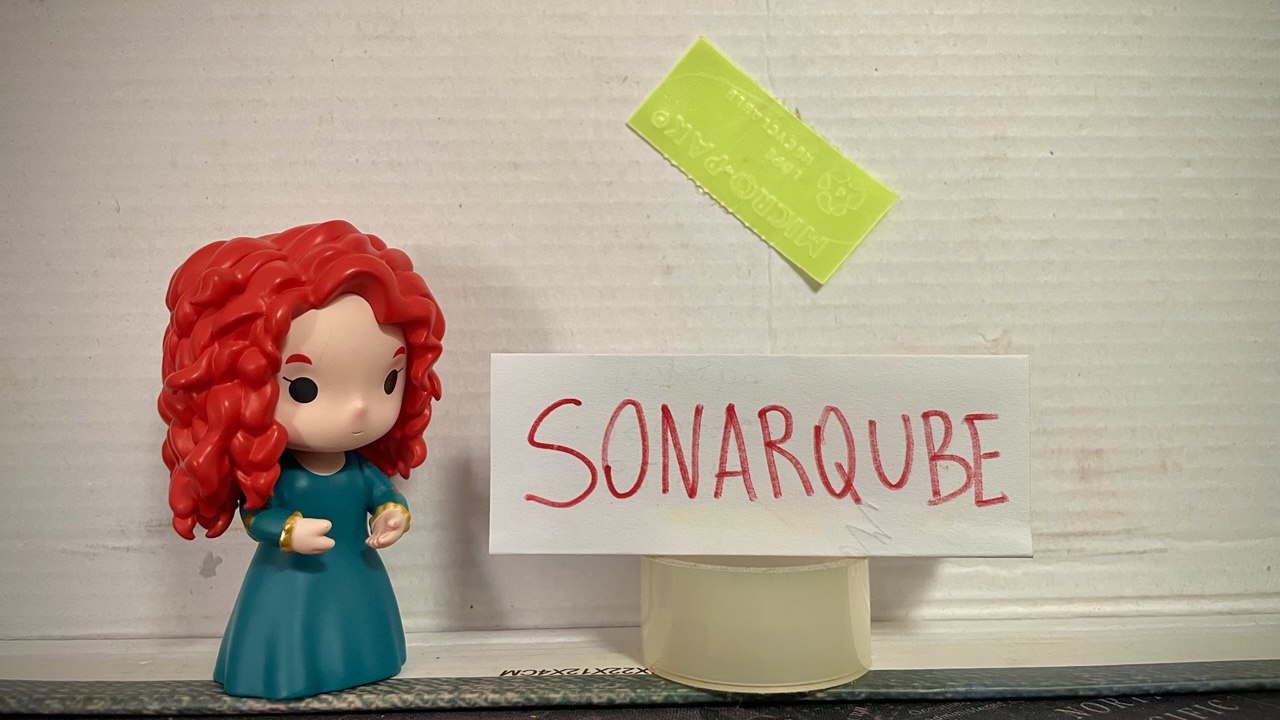How to run SonarQube analysis locally with Docker
The quality of a project can be measured by having a look at how the code is written. SonarQube can help you by running static code analysis and letting you spot the pain points. Let’s learn how to install and run it locally with Docker.
Table of Contents
Just a second! 🫷
If you are here, it means that you are a software developer. So, you know that storage, networking, and domain management have a cost .
If you want to support this blog, please ensure that you have disabled the adblocker for this site. I configured Google AdSense to show as few ADS as possible - I don't want to bother you with lots of ads, but I still need to add some to pay for the resources for my site.
Thank you for your understanding.
- Davide
Code quality is important, and having the right tool can be terribly beneficial for an application’s long-term success.
Although maintainability problems often come from module separation and cannot be solved by making a single class cleaner, a tool like SonarQube can pave the way to a cleaner codebase.
In this article, we will learn how to download and install SonarQube Community using Docker. We will see how to configure it and run your very first code analysis on a .NET-based application.
Scaffold a dummy ASP.NET Core API project
To try it out, you need- of course! - a repository to analyse.
In this article, I will set up SonarQube to analyse a tiny, dummy ASP.NET Core API project. You are probably already familiar with this API project: it’s the default one created by Visual Studio - the one with the Weather Forecast.
I chose to use Controllers instead of Minimal APIs so that we could analyse some more code.
Have a look at the code: you will notice that the default implementation of the WeatherForecastController injects an instance of ILogger, stores it, and then never references it in other places. This sounds like a good maintainability issue that SonarQube should be able to identify.
To better locate which files SonarQube is creating, I decided to put this project under source control, but only locally. This way, when we run the SonarQube analysis, we will be able to see the files created and modified by SonarQube.
Run SonarQube Community Build locally with Docker
Clearly, the first step is to have SonaQube installed on your machine.
I’m going to install SonarQube Community Build. It contains almost all the functionalities of SonarQube, and it’s available for free (of course, to have additional functionalities, you have to pick the proper pricing tier).
SonarQube Community Build can be installed via Docker: this way, SonarQube can run in a containerised environment, regardless of your Operating System.
To do that, you can run the following command:
docker run --name sonarqube-community -p 9001:9000 sonarqube:community
This Docker command downloads the latest version of the sonarqube:community Docker Image, and runs it locally, making it available at localhost:9001.
As briefly explained in an old article, the -p 9001:9000 part of the CLI command means that you are exposing the port 9000 of the “inner” container to the world via the port 9001 of the host.
Once the command has finished downloading all the dependencies and loading all the resources, you will be able to access SonarQube on localhost:9001.
You will be asked to log in: the default username is admin, and the password is (again) admin.

After the first login, you will be asked to change your password.
Create a SonarQube Project
It’s time to link SonarQube to your repository.
To do that, you have to create a so-called Project. Ideally, you may want to integrate SonarQube into your CI pipeline, but having it run locally is fine for tying it out.
So, on the Projects page, you can create a new project. Click on “Create a local project” and follow the wizard.

First, create a new Project by defining the Display name (in my case, code4it-sonarqube-local) and the project key (code4it-sonarqube-local-project-key). The Project Key is used in the command line to execute the code analysis using the rules defined in this project.
Also, you have to specify the name of the branch that you will be using as a baseline: generally, it’s either “main” or “master”, but it can be anything.

Follow the wizard, choosing some configurations (I suggest you start with the default values), and you’ll end up with a Project ready to be initialised.

Then, you will have to generate a token to run the analysis (I know, it feels like there are too many similar steps. But bear with me; we’re almost ready to run the analysis).

By hitting the “generate” button you’ll see a new token like this: sqp_fd71f97760c84539b579713f18a07c790432cfe8. Remember to store it somewhere, as you’ll gonna be using it later.
The last step is to make sure that you have sonarscanner available as a .NET Core Global Tool in your machine.
Just open a terminal as an administrator and run:
dotnet tool install --global dotnet-sonarscanner
Run the SonarQube analysis on your local repository
Finally, we are ready to run the first analysis of the code!
I suggest you commit all your changes so that you’ll see the files generated by SonarQube.
Open a Terminal, navigate to the root of the Solution, and follow these steps.
Prepare the SonarQube analysis
You first have to instruct SonaQube on the configurations to be used for the current analysis.
The command to run is something like this:
dotnet sonarscanner begin /k:"<your key here>" /d:sonar.host.url="<your-host-root-url>" /d:sonar.token="<your-project-token>"
For my specific execution context, using the values you can see in this article, I have to run the command with the following parameters:
dotnet sonarscanner begin /k:"code4it-sonarqube-local-project-key" /d:sonar.host.url="http://localhost:9001" /d:sonar.token="sqp_fd71f97760c84539b579713f18a07c790432cfe8"
The flags represent the configurations of SonarQube:
/k is the Project Key, as defined before: it contains the rules to be used;
/d:sonar.host.url is the url that will receive the result of the analysis, allowing SonarQube to aggregate the issues and display them on a UI;
/d:sonar.token is the Token you created before.
After the command completes, you’ll see that SonarQube created some files to prepare the code analysis. These files contain all the rules under code analysis and their related severity.

From now on, SonarQube will be able to run the analysis and understand how to treat each issue.
Build the solution
Now you have to build the whole solution, running:
dotnet build
You can, of course, choose to run the command specifying the solution file to build.
Even if it seems trivial, this step is crucial for SonarQube: in fact, it generates some new metadata files that list all the files that have to be taken into account when running the analysis, as well as the path to the output folder:

Run the actual SonarQube analysis
Finally, it’s time to run the actual analysis.
Again, head to the root of the application, and on a terminal run the following command:
dotnet sonarscanner end /d:sonar.token="<your-token>"
In my case, the full command is
dotnet sonarscanner end /d:sonar.token="sqp_fd71f97760c84539b579713f18a07c790432cfe8"
Depending on the size of the project, it will take different amounts of time. For this simple project, it took 7 seconds. For a huge project I worked on, it took almost 2 hours.
Also, the run time depends on the amount of new code to be analyzed: the very first run is the slowest one, and then all the subsequent analyses will focus on the latest code. In fact, most of the issues are stored in a cache.
No new files are created, as the result is directly sent to the SonarQube server.
Navigate the SonarQube report via UI
The result is now available at localhost!
Open a browser, open the website at the port you defined before, and get ready to navigate the status of the static analysis.

As I was expecting, the project passed the so-called Quality Gates - the minimum level set to consider a project “good”.
Yet, as you can see under the “Issues” tab, there are actually two issues. For example, there’s a suggested improvement that says to remove the _logger field, it is not used:

Of course, in a more complex project, you’ll find more issues, with different severity.
Further readings
This article first appeared on Code4IT 🐧
In this article, I assumed you know the basics of Docker. If not, or if you want to brush up your knowledge about the basics of Docker, here’s an article for you.
🔗 First steps with Docker: download and run MongoDB locally | Code4IT
All in all, remember that having clean code is only one of the concerns you should care about when writing code. But what should you really focus on?
🔗 Code opinion: performance or clean code?
Wrapping up
SonarQube is a tool, not the solution to your problems.
Just like with Code Coverage, having your code without SonarQube issues does not mean that your code is future-proof and maintainable.
Maybe the single line of code or the single class has no issues. However, the code may still be a mess, preventing you from applying changes easily.
I hope you enjoyed this article! Let’s keep in touch on LinkedIn, Twitter or BlueSky! 🤜🤛
Happy coding!
🐧


